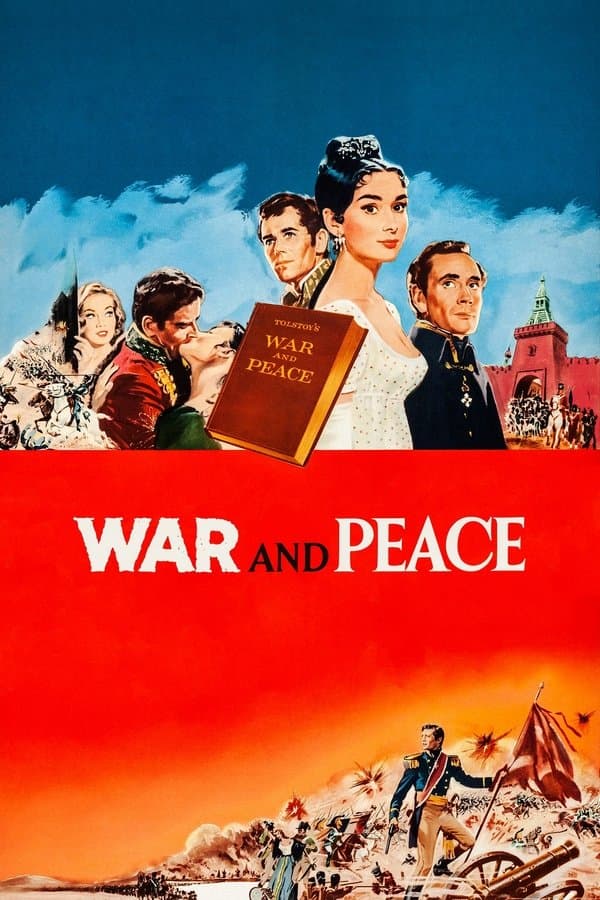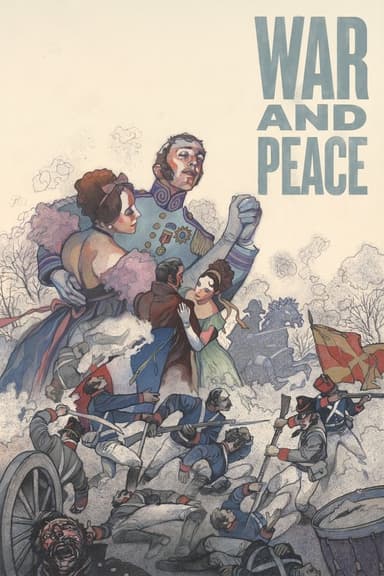
War and Peace
1956 • Drama, History, Romance, War • PG
The love story of young Countess Natasha Rostova and Count Pierre Bezukhov is interwoven with the Great Patriotic War of 1812 against Napoleon's invading army.
Runtime: 3h 28m
Why you should read the novel
If you’re choosing between the 1956 movie and the source, read War and Peace by Leo Tolstoy. The novel delivers panoramic storytelling, interior monologues, and the lived texture of Russian society that no film can fully capture.
Tolstoy’s masterpiece probes big ideas—free will versus fate, how history is shaped, and what love, duty, and faith mean during war. Its reflective epilogues, historical analyses, and moral questions invite the kind of deep engagement the screen can only hint at.
Pick a trusted English translation (Pevear and Volokhonsky, Aylmer and Louise Maude, or Anthony Briggs) and experience Pierre, Natasha, Andrei, Nikolai, and Marya in full. You’ll gain subplots, letters, and voices absent from the adaptation, making the reading journey richer and more rewarding.
Adaptation differences
Scope and focus: the 1956 adaptation condenses Tolstoy’s vast narrative into a star-driven romance. It prioritizes the Natasha–Pierre–Andrei triangle and trims many Rostov and Bolkonsky family threads, domestic detail, and secondary characters.
Philosophical content: Tolstoy’s historical and theoretical chapters—including the Second Epilogue—are omitted. The film shifts emphasis from meditations on history, agency, and leadership to visual spectacle, simplifying the novel’s complex conversation about how events unfold.
Character arcs: Pierre’s Freemasonry, moral crises, captivity, and bond with Platon Karataev are abbreviated; Natasha’s fall and redemption are accelerated; Nikolai Rostov and Princess Marya’s courtship is minimized; Sonya, Dolokhov, and Helene are streamlined into clearer types.
Historical and linguistic texture: major battles like Austerlitz and Borodino are staged with Hollywood heroism; Kutuzov and Napoleon are simplified; the aristocracy’s French–Russian code-switching becomes uniform English. The reflective postwar epilogue is largely absent, yielding a neater, more upbeat ending than the book’s meditative closure.
War and Peace inspired from
War and Peace
by Leo Tolstoy












